#film comparison
Explore tagged Tumblr posts
Text


David Cronenberg's Videodrome (1983) vs. Jane Schoenbrun's I Saw the TV Glow (2024)
#david cronenberg#jane schoenbrun#videodrome#i saw the tv glow#film comparison#80s#cinema#movies#favorite movies#movie stills#cinematography#isttvg
221 notes
·
View notes
Text

Jack Nance in TWIN PEAKS pilot (1990) x ERASERHEAD (1977): It's always seemed to me no accident that TWIN PEAKS opens with Laura Palmer's body being found by a man best known in Lynch's work for playing a father who kills his child amidst a strange dreamscape...

In both works, the body of the child ultimately killed by the father is tightly wrapped in a layer of outer covering. They're the hidden (temporarily) made visible; bundles of fear and torment buried, erased from the land of the living.

19 notes
·
View notes
Text
Quickly and poorly reviewing and ranking adaptations of Jane Eyre (1996, 1997, 2006, 2011) by their pros and cons:
1996 pros:
Best fire scene, easily. It actually gave me that excited feeling that good cinema gives a person. Much of the cinematic art was enjoyable altogether, including the costumes.
This film probably has ond of the best Bertha's in my opinion. She's truly sympathetic, beautiful, and fierce. probably tied for my favorite Bertha actress with 2006. She and Poole are given little time in the story, however.
Most adaptations shit on St. John. Here, that isn't the case. What little time he has is spent in making him much more appealing than I've ever seen him, both physically and characteristically. I like this, because many forget that Jane did love him in her way, and he is supposed to be attractive and nice despite his zealotism.
1996 has the best Adèle, which is amazing for me as a big Adèle fan. There is more focus on her and her relationships with Jane/Rochester. I particularly love the scene where J draws R and Adèle tries to play cupid a little, and when Adèle is offended when the ladies insult Jane.
Best Lowood plot by far. This is the first time I've been able to stand the Young Jane scenes, and little time was devoted to her early life with the Reeds, just enough to let us know she was abused. I like this choice. The young actresses playing Jane and Helen were the best and most rebelious I've seen yet. Their hair cutting scene brought tears to my eyes, which rarely ever happens for me.
Good Blanche plotline. I absolutely love the cinematography/aesthetic & set design.
1996 cons:
the actors are individually endearing in some ways (the scene of Jane and the mirror is particularly touching, as is their reunion). However, The biggest downside to this adaptation is that the chemistry between Jane and Rochester was lacking in my opinion. this is particularly notable in their meeting scene and first proposal scene.
William Hurt is a fantastic actor, and he's likeable, but he's not my favorite Rochester ever. He's alright. On a rewatch I could see myself warming to him more.
I love Charlotte Gainsbourg more for her music than her acting. Granted, she was young here like Jane is supposed to be, so I do not blame her. Visually, aside from her height, I can absolutely see her as Jane. As the film went on I warmed to her acting style; Jane Eyre is a hard role to perform due to her inwardness. I don't think she was horrible, but Anna Paquin (of later True Blood fame) as Young Jane Eyre somewhat outshined Gainsbourg.
I was disappointed in Adèle being sent away to school before the disaster and her not coming back in the end (why couldn't they have had her running with Pilot in the landscape shot!!!).
1997 pros:
Maybe the most accurate Jane and Rochester. I wasn't expecting to like him at all but he blew me away. excellent chemistry between the actors. The dancing scene was very captivating, as was the scene with him jumping from the walkway, their outdoor talks, him chasing her down the stairs — really, I was impressed, because I thought I'd hate this film. Like in the novel and in 96, both actors are a bit conventionally unattractive (well, compared to 11 and to some extent 06) - and like them, the characters grow on you.
BEST ST. JOHN (although 2006 has the best Rivers sisters) - St. John is described as being nice though serious, and looking like a statue of a Greek God with all the coldness AND beauty - and this movie is the only one who relatively understood that assignment (96 came close emphasizing his niceness). Most adaptations adapt his coldness but not his conventional Eurocentric good looks, which not only symbolize his colonizer attribute but also his appeal to Jane and the others. It's also important to have a conventionally handsome actor play St. John just as it's important to have a conventionally less attractive Jane Eyre because one theme of the novel is the critique of Victorian physiognomy & beauty; Jane/Rochester being unconventionally attractive is a contrast to Bertha, St. John, Blanche, Georgiana being attractive, so I think this element is not inconsequential. The difficult part is that beauty is highly subjective, so relying on conventional standards is key, as is the reminder that Victorian standards were a bit different from our own.
good Lowood plotline, good Gateshead plotline, fantastic Adèle with lots of adorableness & miraculous though OOC bonding between her and Rochester, fantastic costuming (though I don't know about accuracy), good Blanche plotline overall. Probably my favorite Bertha plotline for being sufficiently creepy.
1997 cons:
this isn't really a con for me but many people may dislike 97 Rochester for being passionate to the point of coming off crazy, and physical domineering as when he grabs Jane when she tries to leave — however, this does kind of fit for canonical Rochester & I don't mind it since he's supposed to be that way, but this is still arguably a con nevertheless. he does come off as too forward but i get they were trying to capture the whole overpassionate thing. it does come off as a little more toxic than other depictions perhaps!
I have very few complaints overall. I don't think the chemistry is as appealing as 2006, but it is accurate. I wish there was more Adèle, but you can't have everything.
The posters are bad and make the actors look worse than they are which subsequently turns people away. I think 1996 was marketed a bit better but that 2006 also suffers from bad poster syndrome which had an effect on me also. Presentation is important; marketing and advertising are also important in cinema. The aesthetic isn't as good as 1996 although I don't think the visuals are bad overall.
Jane is a little dissociative seeming, which can be off-putting for myself and other viewers I assume, but to be fair she is described as being like a weird little elf creature in the book, and the actress plays this very well, actually looking quite ill when Rochester asks if she is.
2006 pros:
Best chemistry between Jane/Rochester by far and for this reason will always be my favorite because it actually made me fall in love with Rochester in the end though I didn't like his portrayal at all at first (that's power! — and my love for this Rochester should arguably be a con for the sake of my sanity and pride). best Rochester imo and a fantastic Jane. I love love love the way they did the Rochester storytime flashbacks and fleshed out his character as a result.
Best and most enjoyable Blanche Ingram plotline by far (although no one likes the lack of Rochester-in-drag, the party scenes & insertion of the twin flame theory was delightful).
some of the best dialogue, fantastic Adèle plotline, good Bertha plotline, best Pilot, best Rosamond, good costuming, good sets/locations (the fairytale ambience of Jane walking outside before meeting Rochester! Rochester's weird study!), I like the extra focus placed on themes such as nature/genetics/science, religion, travel, sexuality, etc.
2006 cons:
I dislike the way they did the Lowood and Gateshead plots, and although the Rivers sisters were good, I resent their St. John plotline for the most part. I disliked the lack of mystery surrounding Bertha; I think they made it way too obvious & not creepy enough, especially in showing her perspective from the window and giving her lines (one line, calling Jane a whore in Spanish) which no other adaptation does. I was sorely bored before and after Thornfield and only really revived when she got back to Ferndean (although Jane's flashbacks and some of the St. John plotline [the references to love, reminding us of her inner thoughts of Rochester] kept me alive). I suppose there were prices to pay for the excellence of the Jane and Rochester moments. - in comparison these seem like small prices, but still!
2011 pros:
deciding to go with a non-linear structure was a fantastic choice though I was skeptical of it at first, good St. John plotline for the most part & which they put emphasis on, really fantastic Jane with a lot of good fierce moments & lines, maybe the best Gateshead plotline including Mrs. Reed & the Red Room scene (although the lack of red was disappointing, and the lack of explanation for the chimney monster is conflicting – was it all in her head?), good young Jane, one of the best Richard Masons, star-studded cast, good dialogue, maybe the best costuming, Aesthetic™️
2011 cons:
least favorite adele (not insulting the child actress, this is the fault of the writers/directors)
— this is where i call security to protect me from an onslaught of jane eyre 2011 fans here on tumblr. alright, maybe i should watch it again — but i was expecting a lot more. particularly from michael fassbender as mr. rochester. probably my least favorite rochester by far & the least sympathetic. this rochester captures the dark and dangerous part of him but imo not so much the higher feelings that define him. the lack of humour & lack of unrepressed passion/drama/rage is noticeable - rochester isn't supposed to be quiet; as toby stephens (2006) said in an interview, rochester never shuts up in the book, he's really too eccentric to even be adapted accurately; he has to be toned down to be realistic, but here he's muted too far. - i felt like mia was carrying all of their scenes on her back & that the chemistry really rested on her primarily.
Cinematography-wise, there are some gems in the stills (famous hand holding gif), but I dislike the overall muted palette of the film; many will think this suits the tone and in some ways I agree, however, I will always prefer color and dislike the epidemic of desaturation we've seen so often in 21st century cinema. For this reason, 96, 97, 06 all triumph against 2011 aesthetically for me personally, although I still recognize some of the artistry of 2011, it is not my preference.
My overall ranking: 2006 (primarily for Jane/Rochester), 1997 (excellent overall), 1996 (good but flawed), 2011 (I tried but overall did not enjoy it).
#jane eyre#jane eyre 2011#jane eyre 2006#jane eyre 1996#jane eyre 1997#mr rochester#charlotte bronte#charlotte brontë#the brontes#movie reviews#film review#film comparison#film reviews#cinema#adaptations#critique#my analysis#my reviews#my opinion
70 notes
·
View notes
Text


Midsommar (2019) dir. Ari Aster Strange Darling (2024) dir. JT Mollner
#Midsommar#Strange Darling#Ari Aster#JT Mollner#Florence Pugh#Willa Fitzgerald#Film Comparison#Comparisons
10 notes
·
View notes
Text
Maybe this is an inadequate comparison, but I find these two characters’ situations to be similar enough to warrant mentioning.
Think of the iconic finger-pricking scene from Sleeping Beauty - we all know it. It is quite clear that Maleficent is violating Aurora’s free will. Aurora is not in control of her own mind; Maleficent hypnotizes her. Aurora does not want to prick her finger; Maleficent forces her to do it. And as an ordinary girl with no powers of her own, she has no chance of adequately fighting back against Maleficent’s magic. Yet even in that scene, we see her inner strength. The fairies yell “don’t touch anything!” and not only does Aurora hear them, she actually moves her hand back in obedience. Then Maleficent reiterates “touch the spindle” and overpowers her will once more. And as far as I’ve read and heard, everyone who watches the film understands this. I’ve never heard any blame thrown at Aurora (though I’m sure it’s been done sometime by some ignorant viewers). Everyone understands that this isn’t her fault, that she tried her best to resist but didn’t have a chance. She gains our sympathy, not our contempt or scorn.
So why can’t everybody extend Frodo Baggins the same courtesy? Maleficent’s indomitable power over Aurora is made clear in only one scene, but the Ring’s indomitable power over Frodo is made clear throughout an entire book / three entire movies. And Frodo’s strength is made even clearer … for 6 months straight, while walking thousands of miles on foot, he still resists it and fights it all the way into Mordor, all the way into the one place where the Ring would be in danger. And yet … some people still blame Frodo for being ultimately unable to defeat the Ring’s will in Mt. Doom?! They still say it’s his fault?! They still say he was weak and useless?! One reviewer actually wrote and printed that he “should’ve been executed in Gondor” for not destroying the Ring himself?!
What is WRONG with people?!!! Aurora and Frodo’s situations are pretty much the exact same - the only difference is that Frodo had it EVEN WORSE than Aurora. Wake up and smell the coffee, for heaven’s sake!!
I can’t believe there still exists a need for this point to be made. Yet I once again stumbled across words of Frodo hate and felt I had to put this out there.
#frodo baggins#princess aurora#film parallels#film comparison#sleeping beauty#sleeping beauty 1959#lotr#jrr tolkien#lotr books#lotr movies#lord of the rings#maleficent#the one ring
50 notes
·
View notes
Link
This week, we are comparing Captain Fantastic (2016) and The Glass Castle (2017), two films about families raised in unconventional ways.
-----
The Movies:
Captain Fantastic (2016)
Directed by Matt Ross
Written by Matt Ross
iMDb Rating: 7.8
The Glass Castle (2017)
Directed by Destin Daniel Cretton
Written by Destin Daniel Cretton & Andrew Lanham
Based on the memoir by Jeannette Walls
iMDB Rating: 7.1
-----
Find us on:
Discord - https://discord.gg/dxgmcfj552
Tumblr - @ItTakesTwoPod
Instagram - @ItTakesTwo_pod
Facebook - @ItTakesTwoPod
Youtube - @ittakestwonz
Bluesky - @ittakestwo
Our website - ItTakesTwo.co.nz
-----
Content Warning:
Discussions of death, suicide, illness, poverty, mental illness, physical abuse, child abuse, sexual abuse, emotional abuse, trauma, injury.
#it takes two#podcast#film review#film comparison#film#indie podcast#captain fantastic#the glass castle#viggo mortensen#brie larson
3 notes
·
View notes
Text
Monkey Man Packs a Brutal Punch: A Review
Kid, an anonymous young man who ekes out a meager living in an underground fight club where, night after night, wearing a gorilla mask, he is beaten bloody by more popular fighters for cash. After years of suppressed rage, Kid discovers a way to infiltrate the enclave of the city’s sinister elite. As his childhood trauma boils over the man who took everything from him.
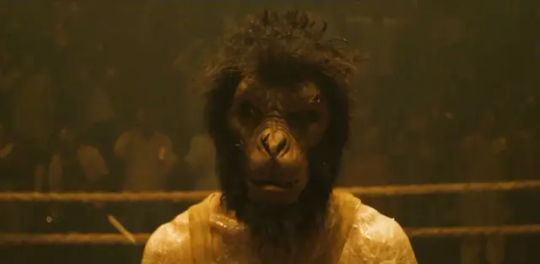
It's nothing short of a miracle that the Monkey Man has finally emerged from the depths of development purgatory. After years of languishing in the turbulent waters of Netflix's production pipeline, Jordan Peele emerged as the savior, resurrecting the project and ushering it onto the grand stage of the silver screen. However, despite the palpable excitement and joy that accompanied its long-awaited release, I find myself grappling with conflicting emotions.
On one hand, the film's stylistic choices, characterized by the relentless use of shaky cam, uncomfortably close-up cinematography, and disjointed editing, left me feeling perpetually unsettled and, at times, downright nauseated. Throughout the entirety of its runtime, I found myself silently pleading for respite from the visual chaos, yearning for clarity amidst the frenetic flurry of motion that dominated the screen. Yet, alas, my desperate entreaties were met with indifference, as the film stubbornly clung to its chosen aesthetic, heedless of its potential impact on its audience. Moreover, while the premise of the film held promise, offering the tantalizing allure of a revenge thriller, the execution ultimately fell prey to the trappings of the genre. The narrative unfolded along a disappointingly predictable trajectory, with each plot twist and turn telegraphed well in advance, robbing the story of any genuine sense of suspense or intrigue. It became increasingly evident that the film was content to tread familiar ground, relying heavily on tired tropes and clichés rather than daring to chart a more innovative and unexpected course.

However, conversely, one cannot overlook the evident passion that director, co-writer, and lead actor, Dev Patel, has poured into this project. His directorial prowess not only breathed life into the script but also elevated it to new heights through the incorporation of cultural metaphors and meticulous artistic direction. Patel's vision packs a powerful punch, particularly evident in the film's action sequences. Despite some reservations about the framing, these moments are executed with a raw and brutal intensity that hits in all the right ways Featuring unique yet visceral kills and a trio of extended action set pieces, Patel draws inspiration from the John Wick franchise while infusing the genre with his own distinctive flair. Furthermore, the film deftly navigates numerous political and social themes with remarkable finesse, seamlessly integrating them into the fabric of the narrative. Particularly commendable is its handling of trans representation, notably through the portrayal of the Hijra people, which surpasses the treatment typically found in mainstream LGBT+ media.
As anticipated, Dev Patel shines brilliantly as an action star in the first trailer. He exudes a raw, ferocious intensity befitting a formidable action hero while also conveying an emotional vulnerability that encapsulates his character's traumatic past. Sikandar Kher and Makarand Deshpande deliver compelling performances as the antagonists, showcasing their formidable acting chops. However, their characters are somewhat underutilized, particularly Deshpande, who remains mostly in the shadows over 95% of the film. There's a yearning for a deeper exploration of his character beyond merely being a background figure. On a contrasting note, Vipin Sharma's unexpected presence brings a comforting warmth and love to the screen.
In summary, "Monkey Man" packs a powerful punch as Dev Patel establishes himself in the action genre. While the film may have its shaky moments, it brims with passion and creativity. It's evident that Patel is still honing his craft, but this marks a commendable debut for the first-time director. I can’t wait to see what he comes up with next.
On another note, how is it possible for a man who works at an underground flight club, to still have one of the most beautiful faces in the world despite being beaten to a pulp every night? Someone teach me this sorcery.
My Rating: B
#film#cinema#movies#movie#filmmaking#filmmaker#moviemaking#moviemaker#cinephile#cinematogrpahy#film comparison#film community#film is not dead#movie review#film critic#movie critic#film review#monkey man#dev patel#cinematography
4 notes
·
View notes
Text
instagram
Fight Club (Chuck Palahniuk)
❓What do you think about the movie's ending?
I prefer the one in the book 📙 by #Palahniuk
Film Ending (1999)
In David Fincher’s movie, the protagonist (Edward Norton) realizes that Tyler Durden is a hallucination and tries to stop him. However, he fails to prevent Project Mayhem’s final plan from unfolding. After shooting himself in the mouth to "kill" Tyler, he sees Marla enter the room and takes her hand. As the city lights up with explosions, buildings collapse, and financial systems are destroyed.
👉 The movie seems to suggest that the rebellion against the system has succeeded, with an almost romantic sense of destruction and rebirth.
Book Ending (1996)
In Chuck Palahniuk’s novel, the sequence is similar up to the final confrontation between the protagonist and Tyler. However, Project Mayhem’s plan fails because the protagonist has sabotaged the explosives, making them ineffective. After shooting himself to eliminate Tyler from his mind, he wakes up in a psychiatric hospital, believing he is in paradise. But the nurses and doctors reveal themselves as Project Mayhem members, telling him they are waiting for him to recover so they can "carry on with the plan."
👉 The book’s ending is more ambiguous and unsettling: there is no clear victory for the protagonist, and the system remains intact. The cycle of violence seems destined to continue.
📌 Fun fact: Palahniuk has stated that he prefers the movie’s ending over the one in his book. 😅
💬 Drop your thoughts below 👇🏼
#chuck palahniuk#fight club#books and reading#books#book blog#reading community#book recommendations#libri#librichepassione#libri consigliati#libridaamare#libridaleggere#cinema#cinematography#movies#film#Instagram#film vs book#movie analysis#cult movies#philosophy#nihilism#film comparison#ai artwork#ai art#ai art gallery#ai image#ai generated#ai creation#ai
0 notes
Text
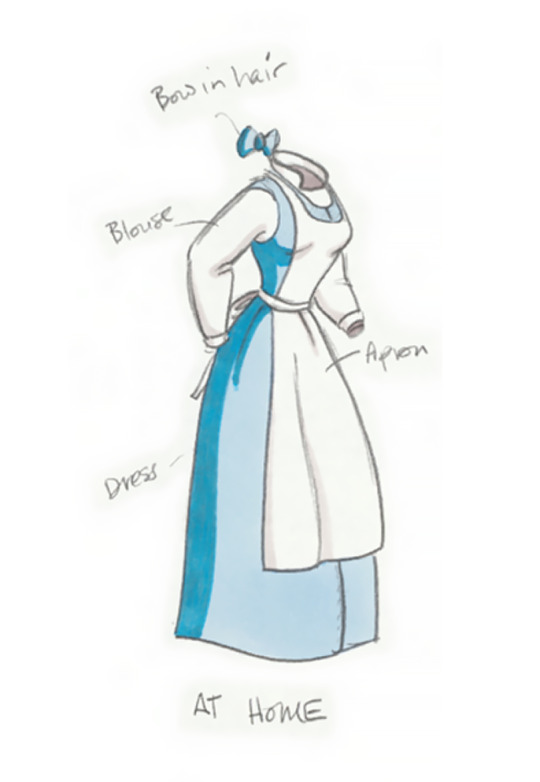



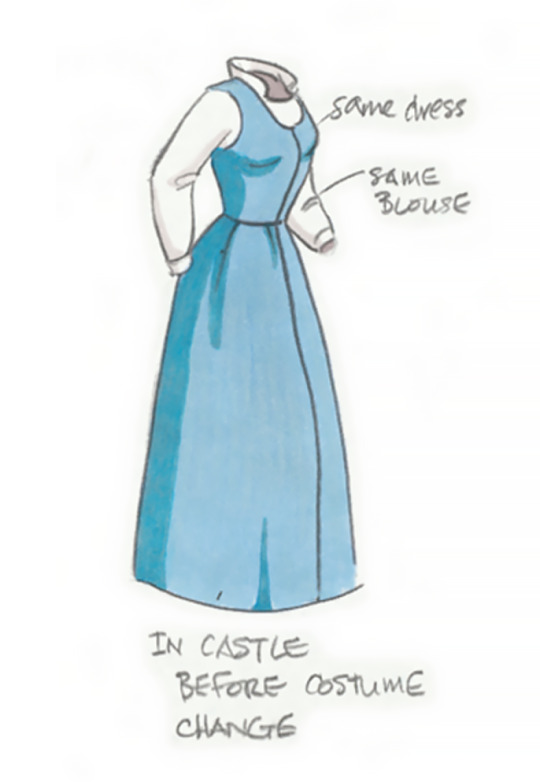


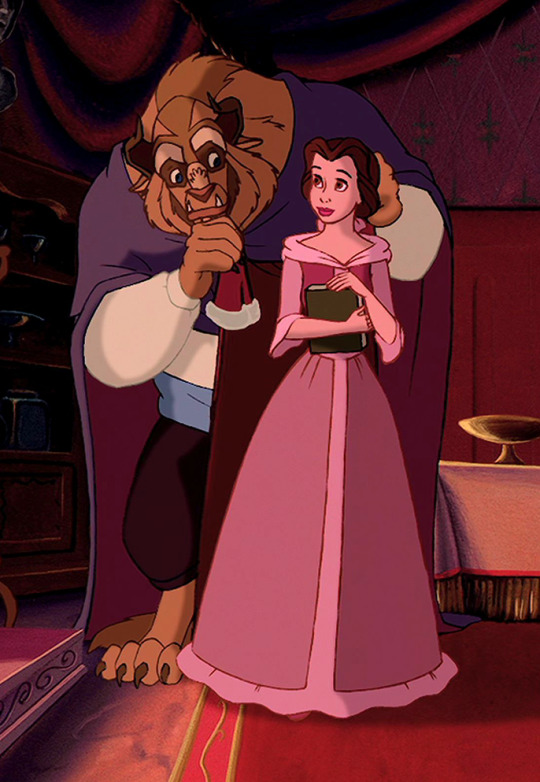


Belle costume designs ➙ final film
#disney#beauty and the beast#costume design#belle#disney princess#concept art#animation#disney animation#disney concept art#animation art#art#artwork#illustration#costume art#disney art#final film comparison
6K notes
·
View notes
Text
forever thinking about D-16’s “I want to kill him.” monologue. that initial line hit so hard. it was a line that made me think There He Is. because, yeah, that’s the megatron we know. that’s the megatron that worked in the mines, and when cybertron’s government turned its back on him, his rage won out. he devoted his life to something for nothing, for a world that didn’t give a damn about him. the story may have changed, but the essence of his origin is still there.
#specifically talking about this in comparison to IDW 2005 megatron#finally a coherent thought on this film#after three days#i am still emotionally wrecked#tf one#tf one spoilers#transformers one spoilers#transformers one#transformers#maccadam#megatron#d 16#d-16
5K notes
·
View notes
Text
Portra 400 vs. Portra 800 - Which 35mm Film To Invest In
Discover the differences between Kodak Portra 400 and Portra 800 35mm film in our detailed comparison.
Choosing the right kind of film for your creative pursuits can make a difference in what you capture. The desired results are impacted by your photography skills but also the type of film you decide to go with. Here we’re going to explore two popular Kodak Portra 35 mm films; Portra 400 and Portra 800, comparing their characteristics and helping you decide which one might be a better investment…

View On WordPress
#35mm camera#35mm film#analog film#film comparison#film photography#kodak 35mm film#kodak portra#portra 400#portra 800#portra film#portra films
0 notes
Text

THROUGH A GLASS DARKLY (1961, Ingmar Bergman) x THROUGH THE LOOKING GLASS... (1871, John Tenniel for Lewis Carroll). While Bergman's title is very close to Carroll's, it has an independent, Biblical origin—and yet the similarity of these sequences is striking, suggesting clear influence...

PERSONA (1966, Bergman) x THROUGH THE LOOKING GLASS, & WHAT ALICE FOUND THERE (1871, Tenniel's original illustration for Carroll of Alice facing her reverse image & moving thru the mirror). This iconic image from PERSONA likewise seems to be clearly influenced by Carroll & Tenniel's ALICE works...




It seems fitting Carroll should inspire Bergman; both shared an interest in what lies beneath individual & social veneers, exploring it w/ elliptical, fantastical art. In the case of PERSONA, the exploration includes ALICE-esque touches of mirrors, mushrooms, madness, tea, & more...

Carroll's works have cast a long cultural shadow, & it's common to see their influence in classic films—including, seemingly, in works by Hitchcock, Rivette, Polanski, & more. Below, echoes in Kubrick's THE SHINING (whose source book by King expressly references ALICE, fwiw).

Given that TWIN PEAKS begins with rabbit references & ends with an enigmatic Alice, it's natural to impute to it an influence by Carroll's works. (But a further exploration of that topic will have to wait for another day.)


#alice in wonderland#through the looking glass and what alice found there#lewis carroll#ingmar bergman#persona#through a glass darkly#twin peaks#the shining#stanley kubrick#david lynch#mark frost#film comparison
22 notes
·
View notes
Text
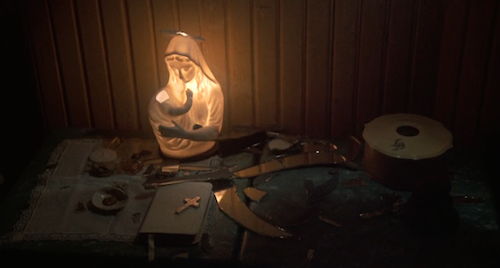
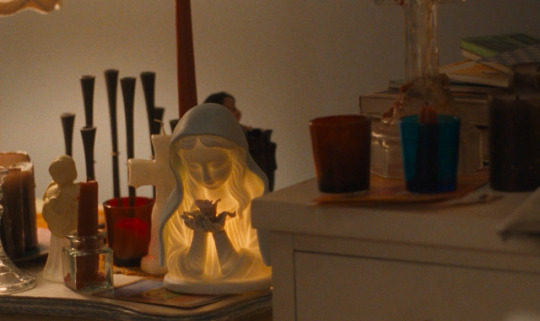
Carrie (1976) / The Virgin Suicides (1999)
#carrie#carrie 1976#stephen king#brian de palma#horror#the virgin suicides#sofia coppola#jeffrey eugenides#90s#70s#film#parallels#comparatives#comparison#sissy spacek#piper laurie#kristen dunst#kathleen turner#virgin mary#1k
8K notes
·
View notes
Text
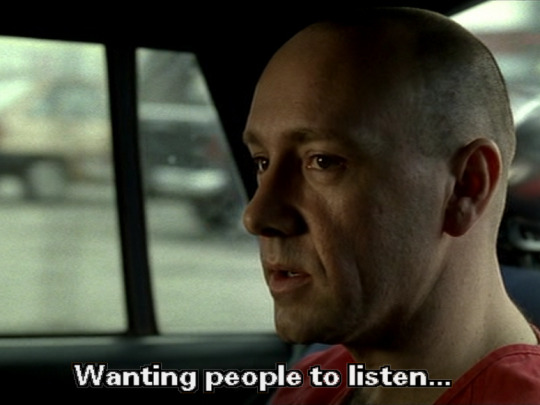

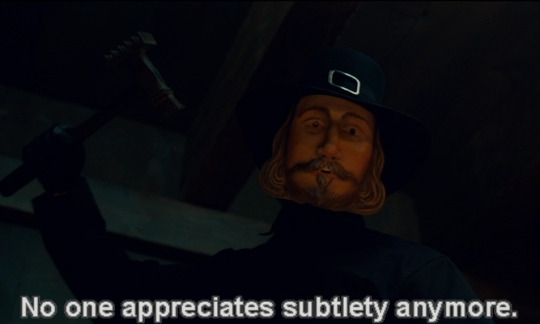
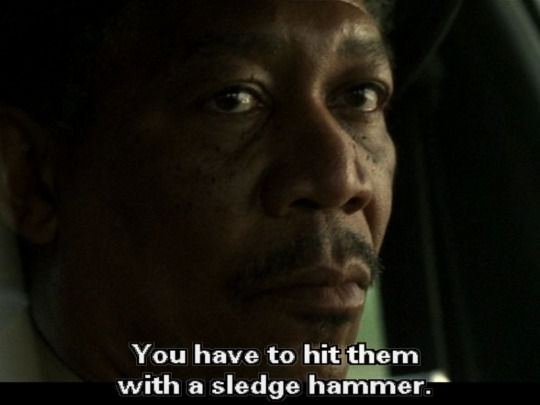
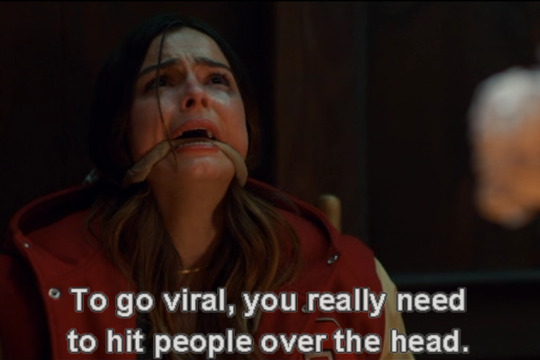

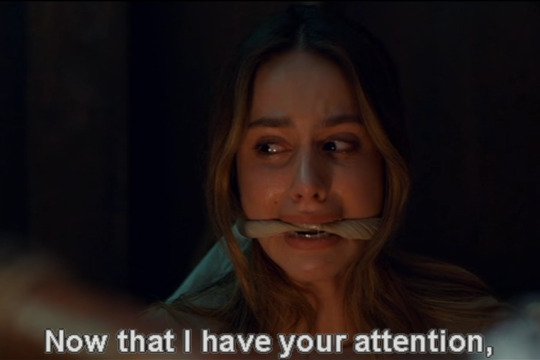
Se7en (1995) dir. David Fincher Thanksgiving (2023) dir. Eli Roth
#Se7en#Thanksgiving#Thanksgiving 2023#Seven 1995#David Fincher#Eli Roth#Horror Movies#horroredit#horrorstills#Film comparison#I haven't made an original post in so long!#It feels so great!#Eek!
14 notes
·
View notes
Text


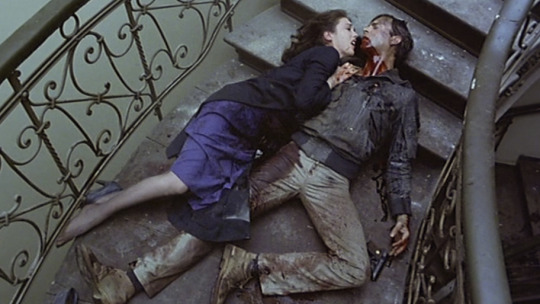
nosferatu (2024) / ravenous (1999) / possession (1981)
#nosferatu 2024#nosferatu spoilers#ravenous#ravenous 1999#horror#horror cinema#gothic fiction#gothic romance#comparatives#comparisons#parallels#parallel#ellen hutter#count orlok#possession 1981#isabelle adjani#cinema#film
774 notes
·
View notes
Link
For our first Pride Month episode of 2024, we have a fun episode comparing Everything Everywhere All At Once (2022) and Muppets From Space (1999) - Two movies about LGBTQ+ characters feeling isolated and searching for meaning, acceptance, and connection from otherworldly sources.
-----
The Movies:
Everything Everywhere All At Once (2022)
Directed by Daniel Kwan & Daniel Scheinert
Written by Daniel Kwan & Daniel Scheinert
iMDb Rating: 7.8
Muppets From Space (1999)
Directed by Tim Hill
Written by Jerry Juhl, Joey Mazzarino & Ken Kaufman
iMDB Rating: 6.2
-----
Find us on:
Discord - https://discord.gg/dxgmcfj552
Tumblr - @ItTakesTwoPod
Instagram - @ItTakesTwo_pod
Facebook - @ItTakesTwoPod
Youtube - @ittakestwonz
Our website - ItTakesTwo.co.nz
-----
Content Warning:
Mentions of misgendering, violence, sexual scenes, nihilism, and death
#it takes two#podcast#film review#film comparison#film#indie podcast#eeaao#everything everywhere all at once#muppets from space#queer cinema#pride month#pride 2024#gonzo the great#gonzo#muppets#gonzo is queer#muppets from space is queer cinema#fight me
4 notes
·
View notes